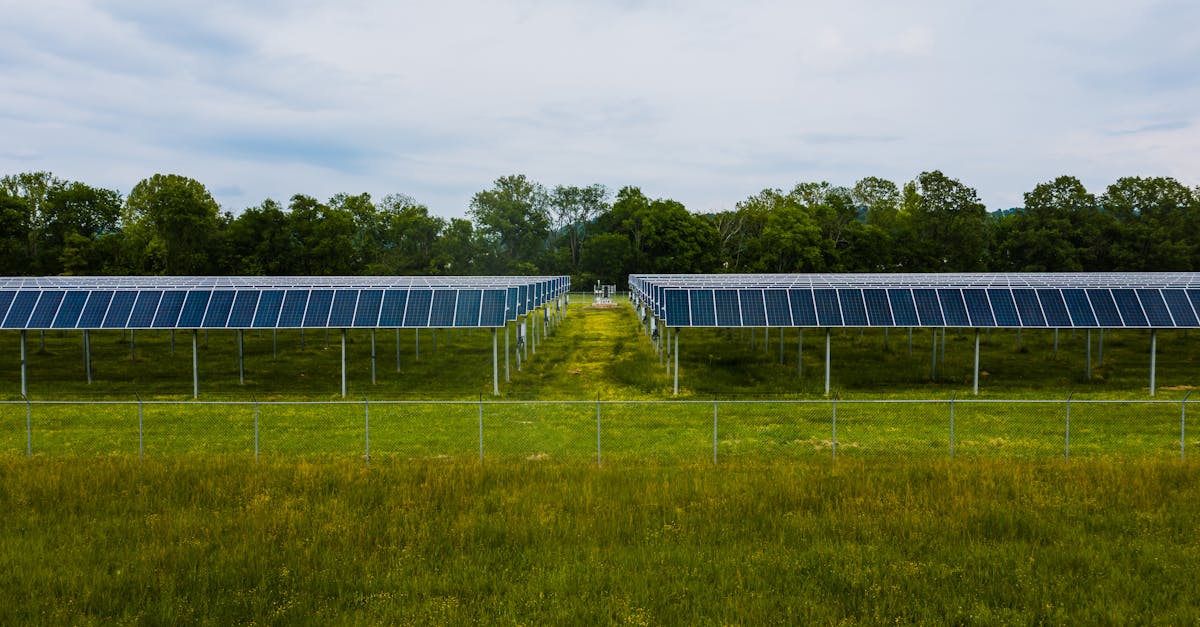Unlocking the Power of Green: A Guide to Investing in Sustainable Energy Stocks

Green Energy Stocks: A Promising Investment for a Sustainable Future
The world is rapidly moving towards a clean energy future, and green energy stocks are poised to benefit from this transition. These stocks represent companies involved in the development, production, and distribution of renewable energy sources, such as solar, wind, and hydropower. Driven by government initiatives, technological advancements, and increasing investor demand for environmentally responsible investments, green energy stocks offer significant growth potential.
Thank you for reading this post, don't forget to subscribe!
Investing in green energy stocks not only aligns with the global push towards sustainability but also presents investors with opportunities for attractive returns. Understanding the types of green energy companies, evaluating their potential, and staying informed about industry trends is crucial for making informed investment decisions. This article explores the key aspects of green energy stocks, providing investors with valuable insights into this rapidly growing sector.
1. The Rise of Green Energy Stocks
The Rise of Green Energy Stocks: A Surge in Popularity with Promising Returns
The global energy landscape is undergoing a significant transformation, driven by a growing awareness of the environmental and economic benefits of renewable energy sources. As a result, green energy stocks have emerged as a popular investment choice, attracting both individual and institutional investors seeking sustainable and potentially lucrative returns.
Several factors have contributed to the surge in popularity of green energy stocks. Government initiatives, such as tax incentives and renewable portfolio standards, have played a crucial role in stimulating investment in clean energy technologies. Additionally, technological advancements have led to the development of more efficient and cost-effective renewable energy solutions, making them increasingly competitive with traditional fossil fuels. Furthermore, the rising demand for environmentally friendly products and services has created a favorable investment climate for green energy companies.
Investing in green energy stocks offers investors the potential for attractive returns. As the world transitions towards a clean energy future, companies involved in the development and deployment of renewable energy technologies are well-positioned to benefit from increasing demand for their products and services. Moreover, many green energy companies offer attractive dividend yields, providing investors with a steady stream of income.
Factors Driving the Growth
Factors Driving the Growth: Government Initiatives, Technological Advancements, and Environmental Concerns fueling Green Energy Demand
The growth of green energy stocks is primarily driven by a combination of government initiatives, technological advancements, and growing environmental concerns.
Government Initiatives: Governments worldwide are increasingly recognizing the importance of transitioning to clean energy sources to address climate change and reduce greenhouse gas emissions. They are implementing various policies and incentives to encourage investment in green energy technologies. These include tax credits, renewable portfolio standards, and feed-in tariffs that provide financial support to renewable energy producers. Such initiatives create a favorable investment climate and stimulate the development of the green energy sector.
Technological Advancements: Technological innovations have played a significant role in the growth of green energy stocks. The cost of solar panels and wind turbines has declined significantly in recent years, making renewable energy more affordable and competitive with traditional fossil fuels. Additionally, advancements in energy storage technologies, such as batteries, are enabling the integration of intermittent renewable energy sources into the grid, further increasing their viability.
Environmental Concerns: Growing public awareness of climate change and its potential impact has led to increased demand for environmentally friendly products and services. Consumers and investors are increasingly seeking opportunities to support companies that are committed to sustainability and reducing their carbon footprint. This shift in consumer behavior is driving demand for green energy stocks and contributing to their growth.
ESG Investing Trend
ESG Investing Trend: Growing Preference for Environmentally and Socially Responsible Investments
Environmental, social, and governance (ESG) investing has gained significant momentum in recent years, driven by increasing investor demand for sustainable and responsible investment options. ESG investing involves considering a company’s environmental, social, and governance performance alongside its financial metrics when making investment decisions.
Investors are increasingly recognizing that companies with strong ESG practices tend to be more resilient to long-term risks and have better long-term financial performance. Green energy stocks, in particular, align well with ESG principles, as they contribute to environmental sustainability and the transition to a clean energy future. By investing in green energy stocks, investors can not only potentially generate financial returns but also contribute to positive environmental and social outcomes.
The growing preference for ESG investing is evident in the increasing number of ESG-focused investment funds and the adoption of ESG reporting standards by many companies. Governments and regulatory bodies are also playing a role in promoting ESG investing by encouraging transparency and disclosure of ESG-related information.
2. Types of Green Energy Stocks

Types of Green Energy Stocks: Exploring Different Categories and Key Characteristics
Green energy stocks encompass a diverse range of companies involved in the development, production, and distribution of renewable energy sources. These can be broadly categorized into two main types:
Renewable Energy Producers: Companies in this category generate electricity from renewable sources such as solar, wind, geothermal, and hydropower. They own and operate renewable energy facilities, such as solar farms and wind turbines, and sell the electricity produced to utilities, businesses, and consumers. Some examples of renewable energy producers include NextEra Energy, SolarEdge Technologies, and Brookfield Renewable Partners.
Clean Technology Companies: These companies focus on developing and manufacturing technologies that improve energy efficiency, facilitate the use of renewable energy, and reduce environmental impact. They may specialize in areas such as solar panels, wind turbines, energy storage systems, and electric vehicles. Examples of clean technology companies include Tesla, Enphase Energy, and Vestas Wind Systems.
Renewable Energy Producers
Renewable Energy Producers: A Focus on Solar, Wind, Geothermal, and Hydropower
Renewable energy producers are companies that specialize in generating electricity from renewable sources such as solar, wind, geothermal, and hydropower. These companies play a crucial role in the transition to a clean energy future by providing reliable and sustainable alternatives to fossil fuels.
Solar Energy: Solar energy producers generate electricity from the sun’s energy using photovoltaic (PV) panels. They own and operate solar farms, which are large-scale installations of PV panels, and sell the electricity produced to utilities, businesses, and consumers. Some of the leading solar energy producers include NextEra Energy, SunPower, and First Solar.
Wind Energy: Wind energy producers generate electricity from the wind using wind turbines. They own and operate wind farms, which are groups of wind turbines located in areas with strong and consistent wind resources. Vestas Wind Systems, General Electric, and Siemens Gamesa are among the major wind energy producers.
Geothermal Energy: Geothermal energy producers generate electricity from the heat of the Earth’s interior. They drill deep wells into the Earth’s crust to access geothermal reservoirs and use the steam or hot water to drive turbines that generate electricity. Ormat Technologies and Calpine are examples of geothermal energy producers.
Clean Technology Companies
Clean Technology Companies: Driving Innovation in Energy Efficiency, Storage, and Distribution
Clean technology companies are at the forefront of developing innovative solutions to improve energy efficiency, facilitate the use of renewable energy, and reduce environmental impact. These companies specialize in a wide range of technologies, including solar panels, wind turbines, energy storage systems, and electric vehicles.
Energy Efficiency: Clean technology companies are developing advanced technologies to improve energy efficiency in various sectors, including buildings, transportation, and industry. They offer products and services such as smart thermostats, energy-efficient appliances, and energy management systems that help reduce energy consumption and lower carbon emissions. Examples of energy efficiency companies include Johnson Controls, Schneider Electric, and Siemens.
Energy Storage: Energy storage technologies are crucial for integrating intermittent renewable energy sources, such as solar and wind, into the grid. Clean technology companies are developing innovative battery technologies, such as lithium-ion batteries and flow batteries, as well as other energy storage solutions like pumped hydro storage and flywheels. These technologies enable the storage of excess renewable energy and its release when needed, helping to balance the grid and increase the reliability of renewable energy sources.
3. How to Evaluate Green Energy Stocks
How to Evaluate Green Energy Stocks: Key Metrics and Factors to Consider
Evaluating green energy stocks requires careful consideration of both financial and non-financial factors. Here are some key metrics and aspects to assess when making investment decisions:
Financial Performance: Analyze the company’s financial statements to assess its revenue growth, profitability, and financial stability. Key metrics to consider include revenue, earnings per share (EPS), gross and operating margins, and debt-to-equity ratio. Consistent revenue growth, strong profitability, and low debt levels indicate a financially sound company.
Industry Trends: Stay informed about the latest industry trends, regulatory changes, and technological advancements in the green energy sector. Understanding the competitive landscape, government policies, and emerging technologies can help you identify companies well-positioned to benefit from industry growth. Research industry reports, attend conferences, and follow industry news to stay up-to-date.
Financial Performance
Financial Performance: Assessing a Company’s Financial Health
Evaluating a company’s financial performance is crucial in assessing its overall health and potential for growth. Here’s how to analyze key financial metrics to make informed investment decisions:
Revenue: Revenue is the total income generated by a company from its operations. Consistent revenue growth indicates a company’s ability to increase sales and expand its customer base. Look for companies with a history of steady revenue growth and a clear plan for future growth.
Earnings Per Share (EPS): EPS represents the portion of a company’s profit allocated to each outstanding share of common stock. It indicates the profitability of the company on a per-share basis. Higher EPS generally indicates higher profitability and can be a sign of a well-managed company. Analyze EPS growth over time and compare it to industry peers to assess a company’s financial performance.
Industry Trends
Industry Trends: Staying Informed in a Dynamic Market
Understanding industry trends is essential for making informed investment decisions in green energy stocks. Here’s how to stay up-to-date on the latest developments:
Regulatory Changes: Government policies and regulations significantly impact the green energy industry. Track legislative changes, such as subsidies, tax incentives, and emission standards, as they can affect the profitability and growth potential of green energy companies. Monitor regulatory trends to identify opportunities and mitigate risks.
Technological Advancements: Innovation drives the green energy sector. Stay informed about emerging technologies, such as more efficient solar panels, cost-effective energy storage solutions, and advancements in electric vehicles. Technological breakthroughs can disrupt the industry and create new investment opportunities.
ESG Impact
ESG Impact: Evaluating Environmental, Social, and Governance Practices
In today’s investment landscape, environmental, social, and governance (ESG) factors are increasingly important. Here’s how to assess a company’s ESG performance:
Environmental Impact: Evaluate a company’s commitment to reducing its environmental footprint. Consider its carbon emissions, waste management practices, and use of renewable energy sources. Look for companies that prioritize sustainability and have a clear plan for mitigating their environmental impact.
Social Impact: Assess a company’s social responsibility, including its labor practices, employee well-being, and community involvement. Strong social practices contribute to employee satisfaction, positive stakeholder relationships, and a positive brand reputation.
4. Top Green Energy Stocks to Watch

Top Green Energy Stocks to Watch: Identifying Promising Investment Opportunities
Based on current market performance and growth potential, here are a few green energy stocks to consider:
NEXTEra Energy (NEE): A leading renewable energy provider with a diversified portfolio of solar, wind, and nuclear generation. NEE has a strong track record of growth and is well-positioned to benefit from the increasing demand for clean energy.
SolarEdge Technologies (SEDG): A global provider of solar inverters and energy storage solutions. SEDG’s innovative products and strong market share make it a compelling investment in the solar energy sector.
Brookfield Renewable Partners (BEP): A global leader in renewable energy development and operations. BEP’s diversified portfolio includes hydroelectric, wind, solar, and storage assets. Its strong financial performance and commitment to sustainability make it an attractive investment option.
NEXTEra Energy (NEE)
NEXTEra Energy (NEE): A Profile of the Renewable Energy Leader
NEXTEra Energy (NEE) is a leading clean energy company with a vast portfolio of renewable energy assets and a strong commitment to sustainability. Here’s a closer look at NEE’s profile and business operations:
Business Overview: NEE is the world’s largest generator of renewable energy from wind and solar sources. The company operates a diverse portfolio of clean energy assets, including solar farms, wind turbines, nuclear power plants, and battery storage systems. NEE’s geographical reach spans across North America, with a growing presence in international markets.
Financial Performance: NEE has consistently delivered strong financial performance, driven by its growing renewable energy portfolio and efficient operations. The company’s revenue has grown steadily over the past decade, and it has maintained a strong track record of profitability. NEE’s financial strength and stability make it a reliable investment option in the green energy sector.
SolarEdge Technologies (SEDG)
SolarEdge Technologies (SEDG): A Leader in Solar Inverters and Energy Storage
SolarEdge Technologies (SEDG) is a global provider of solar inverters and energy storage solutions. The company’s products are designed to increase the efficiency and performance of photovoltaic (PV) systems. Here’s a closer look at SEDG’s profile and business operations:
Business Overview: SEDG offers a comprehensive suite of solar inverters, power optimizers, and energy storage systems. Its products are used in residential, commercial, and industrial PV installations worldwide. SEDG’s focus on innovation and technological advancements has made it a leading player in the solar energy industry.
Financial Performance: SEDG has experienced strong financial performance in recent years, driven by the growing demand for solar energy solutions. The company’s revenue and earnings have grown consistently, and it has maintained a healthy profit margin. SEDG’s strong financial position allows it to invest in research and development, as well as expand its global reach.
5. Risks Associated with Green Energy Stocks
Risks Associated with Green Energy Stocks: Potential Challenges to Consider
Investing in green energy stocks offers opportunities for growth, but it also comes with potential risks and challenges. Here are some key risks to be aware of:
Regulatory Uncertainty: The green energy industry is heavily influenced by government policies and regulations. Changes in regulatory frameworks, such as subsidies or tax incentives, can impact the profitability and growth potential of green energy companies. Investors should monitor regulatory developments and assess their potential impact on their investments.
Technological Disruptions: The green energy sector is rapidly evolving, with new technologies emerging frequently. Technological breakthroughs can disrupt existing technologies and business models, leading to competitive pressures and potential losses.
Regulatory Uncertainty
Regulatory Uncertainty: Impact of Government Policies on Green Energy Investments
Government policies and regulations play a significant role in shaping the green energy industry. Changes in these policies can have a substantial impact on the profitability and growth potential of green energy companies. Here are some key considerations:
Subsidies and Tax Incentives: Governments often provide subsidies and tax incentives to promote the development and adoption of green energy technologies. Changes to these incentives, such as reductions or eliminations, can affect the financial viability of green energy projects and impact investor returns.
Emissions Regulations: Governments may implement regulations to reduce greenhouse gas emissions, which can drive demand for green energy solutions. However, changes in emissions targets or regulatory frameworks can create uncertainty for green energy companies and potentially impact their revenue streams.
Technological Disruptions
Technological Disruptions: Impact of Emerging Technologies on Green Energy
The green energy sector is characterized by rapid technological advancements. New technologies have the potential to disrupt existing solutions and reshape the industry landscape. Here are some key considerations:
Breakthroughs in Renewable Energy Generation: The development of more efficient and cost-effective renewable energy technologies, such as advanced solar panels or wind turbines, can disrupt the market share of established technologies. These breakthroughs can lead to increased competition and potentially reduce the profitability of companies invested in older technologies.
Energy Storage Innovations: Advancements in energy storage technologies, such as batteries and pumped hydro storage, are crucial for integrating intermittent renewable energy sources into the grid. New storage solutions can disrupt the market dynamics and challenge the dominance of traditional energy sources.
6. Conclusion
Conclusion: Embracing Green Energy Investments for a Sustainable Future
Investing in green energy stocks offers compelling opportunities for both financial returns and positive environmental impact. The growing demand for clean energy, driven by government initiatives, technological advancements, and increasing consumer awareness, has created a favorable investment climate for green energy companies.
By carefully evaluating green energy stocks based on financial performance, industry trends, ESG practices, and potential risks, investors can position their portfolios for growth while contributing to a sustainable future. As the world transitions towards a clean energy economy, green energy investments are poised to play a crucial role in shaping a greener and more sustainable tomorrow.




